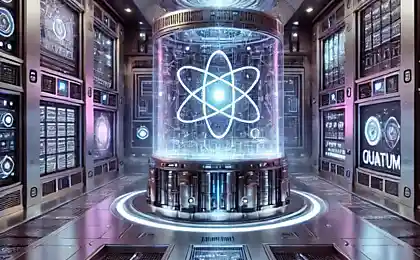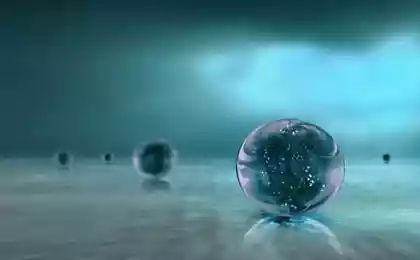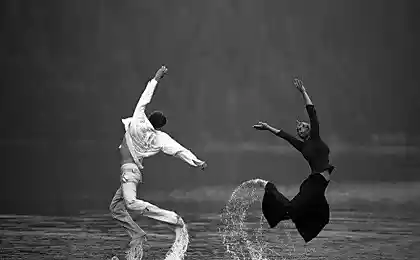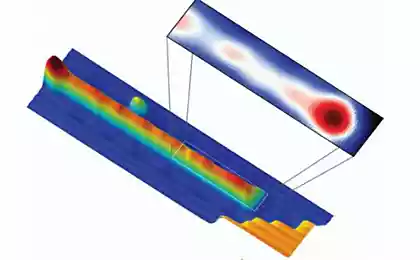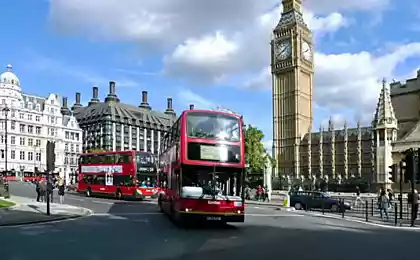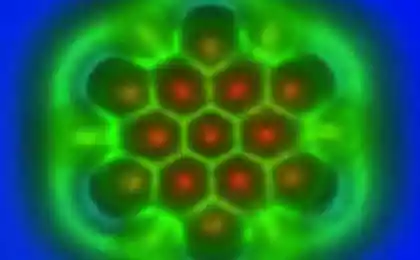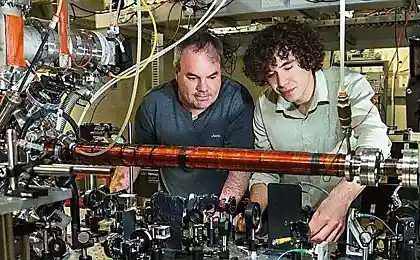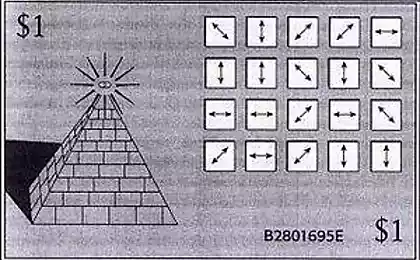495
A breakthrough experiment showed that the time "arises" as a result of the entanglement of quantum particles
Physicists say: time is an emergent phenomenon, a side effect of quantum entanglement of particles. And now they were the world's first experimental results that confirm this.
In 1983, theoretical physicists don page and William Wooters proposed an innovative theory based on the phenomenon of quantum entanglement. This exotic property allows two quantum particles to have a common existence, even if they are physically separated.
Quantum entanglement is a deep and powerful link and page and Wouters have shown that it can be used to measure time. Their idea was that the way a pair of entangled particles evolyutsioniruet, is some kind of watch that can be used to measure time.

But it turns out in their concept, the results depend on how the monitoring was carried out. One way is to compare the change in the entangled particles with an external clock, which is completely independent from the universe. It's the equivalent of a God-like observer outside the universe measuring the evolution of the particles using an external clock.
In this case, page and Wooters showed that the particles are completely the same – time in such a scenario will not exist.
But there is another way that gives a different result. It is an internal observer and compares the evolution of the particles with the rest of the universe. In this case, the internal observer will see a change, and this difference in the evolution of the particles in comparison with the rest of it will be an important measure of time.
This is an elegant and powerful concept. It suggests that time is an emergent phenomenon that occurs in reality due to the nature of quantum entanglement. And it exists only for observers inside our universe. Any God-like observer outside will see a static unchanging universe as first predicted earlier quantum equation Wheeler-DeWitt.
Of course, without experimental confirmation of the idea page and Wouters no more than a philosophical curiosity. And since we have no possibility to obtain observer outside our universe, apparently, we have no chance of ever confirm this theory.
At least, that was until today. A few days ago, Ekaterina Moreva from the Istituto Nazionale di Ricerca Metrologica in Turin, Italy, and several of her colleagues were able for the first time to experimentally test the ideas page and Wouters. And they have shown that time is indeed emerging phenomenon for internal observers, but it does not exist for outside observers.
This experiment involves the creation of a toy universe consisting of a pair of entangled photons and an observer that can measure their state in one of two ways. In the first, the observer measures the evolution of the system, entangling himself with her. The second God-like observer measures the evolution in comparison with the external clock, which is completely independent of the toy universe.
The experiment itself is straightforward. Each of the entangled photons has a polarization that can be changed by passing through a birefringent plate. In the first case, the observer measures the polarization of a single photon, therefore, snarling with it. It then compares the result with the polarization of the second photon. The resulting difference will be a measure of time.
In the second case, both photons and passes through the birefringent plates which change their polarization. However, in this case, the observer measures only the global properties of both photons, comparing them with independent clocks.
In this case, the observer cannot notice any difference between the photons, not coming to a state of confusion with one of them. But if there is no difference, the system appears before them static. In other words – the time it occurs.
"Although it is incredibly simple, our model combines two contradictory as it seemed before, the properties of the mechanism of the page-Wouters," says Moreva.
This is a very impressive experiment. The emergence of something is a popular concept in science. In particular, recently, physicists became interested in the idea that gravity is also an emergent phenomenon. And from here to the idea of a similar mechanism of time was only one step.
What's missing gravity arises is, of course, the experimental demonstration that would show how this works in practice. That is why the work Morevi is so important – it is the first time in the world and puts abstract and exotic idea of the sustainable experimental basis.
But perhaps the most important result of this work is that the first time she was able to demonstrate that quantum mechanics and General relativity are not so incompatible.
The next step will be to further develop the idea, particularly on a macroscopic level. It is one thing to show how the time arises in the photons, and another to understand how it occurs in humans.
And it would be a difficult job. published
P. S. And remember, only by changing their consumption — together we change the world! ©
Source: vk.com/wiki_inventions?z=photo-56414092_376656973%2Falbum-56414092_00%2Frev
In 1983, theoretical physicists don page and William Wooters proposed an innovative theory based on the phenomenon of quantum entanglement. This exotic property allows two quantum particles to have a common existence, even if they are physically separated.
Quantum entanglement is a deep and powerful link and page and Wouters have shown that it can be used to measure time. Their idea was that the way a pair of entangled particles evolyutsioniruet, is some kind of watch that can be used to measure time.

But it turns out in their concept, the results depend on how the monitoring was carried out. One way is to compare the change in the entangled particles with an external clock, which is completely independent from the universe. It's the equivalent of a God-like observer outside the universe measuring the evolution of the particles using an external clock.
In this case, page and Wooters showed that the particles are completely the same – time in such a scenario will not exist.
But there is another way that gives a different result. It is an internal observer and compares the evolution of the particles with the rest of the universe. In this case, the internal observer will see a change, and this difference in the evolution of the particles in comparison with the rest of it will be an important measure of time.
This is an elegant and powerful concept. It suggests that time is an emergent phenomenon that occurs in reality due to the nature of quantum entanglement. And it exists only for observers inside our universe. Any God-like observer outside will see a static unchanging universe as first predicted earlier quantum equation Wheeler-DeWitt.
Of course, without experimental confirmation of the idea page and Wouters no more than a philosophical curiosity. And since we have no possibility to obtain observer outside our universe, apparently, we have no chance of ever confirm this theory.
At least, that was until today. A few days ago, Ekaterina Moreva from the Istituto Nazionale di Ricerca Metrologica in Turin, Italy, and several of her colleagues were able for the first time to experimentally test the ideas page and Wouters. And they have shown that time is indeed emerging phenomenon for internal observers, but it does not exist for outside observers.
This experiment involves the creation of a toy universe consisting of a pair of entangled photons and an observer that can measure their state in one of two ways. In the first, the observer measures the evolution of the system, entangling himself with her. The second God-like observer measures the evolution in comparison with the external clock, which is completely independent of the toy universe.
The experiment itself is straightforward. Each of the entangled photons has a polarization that can be changed by passing through a birefringent plate. In the first case, the observer measures the polarization of a single photon, therefore, snarling with it. It then compares the result with the polarization of the second photon. The resulting difference will be a measure of time.
In the second case, both photons and passes through the birefringent plates which change their polarization. However, in this case, the observer measures only the global properties of both photons, comparing them with independent clocks.
In this case, the observer cannot notice any difference between the photons, not coming to a state of confusion with one of them. But if there is no difference, the system appears before them static. In other words – the time it occurs.
"Although it is incredibly simple, our model combines two contradictory as it seemed before, the properties of the mechanism of the page-Wouters," says Moreva.
This is a very impressive experiment. The emergence of something is a popular concept in science. In particular, recently, physicists became interested in the idea that gravity is also an emergent phenomenon. And from here to the idea of a similar mechanism of time was only one step.
What's missing gravity arises is, of course, the experimental demonstration that would show how this works in practice. That is why the work Morevi is so important – it is the first time in the world and puts abstract and exotic idea of the sustainable experimental basis.
But perhaps the most important result of this work is that the first time she was able to demonstrate that quantum mechanics and General relativity are not so incompatible.
The next step will be to further develop the idea, particularly on a macroscopic level. It is one thing to show how the time arises in the photons, and another to understand how it occurs in humans.
And it would be a difficult job. published
P. S. And remember, only by changing their consumption — together we change the world! ©
Source: vk.com/wiki_inventions?z=photo-56414092_376656973%2Falbum-56414092_00%2Frev
